
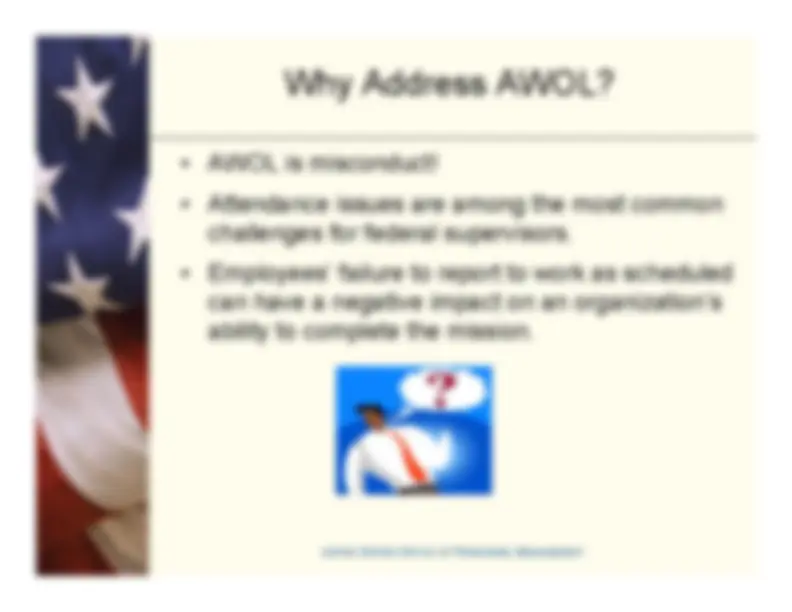
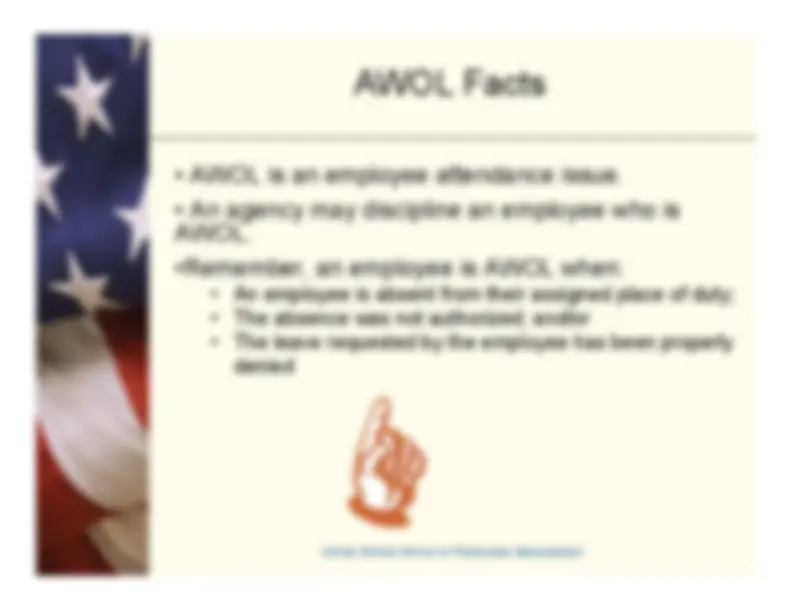
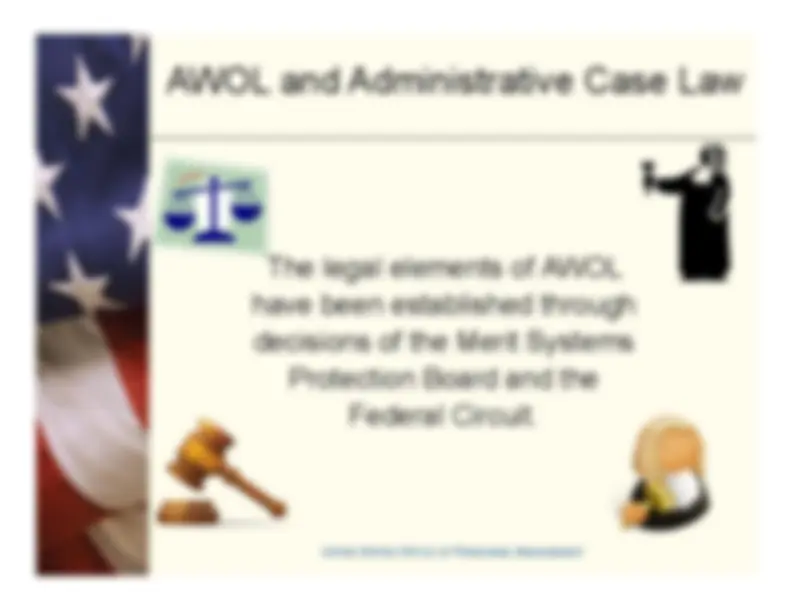
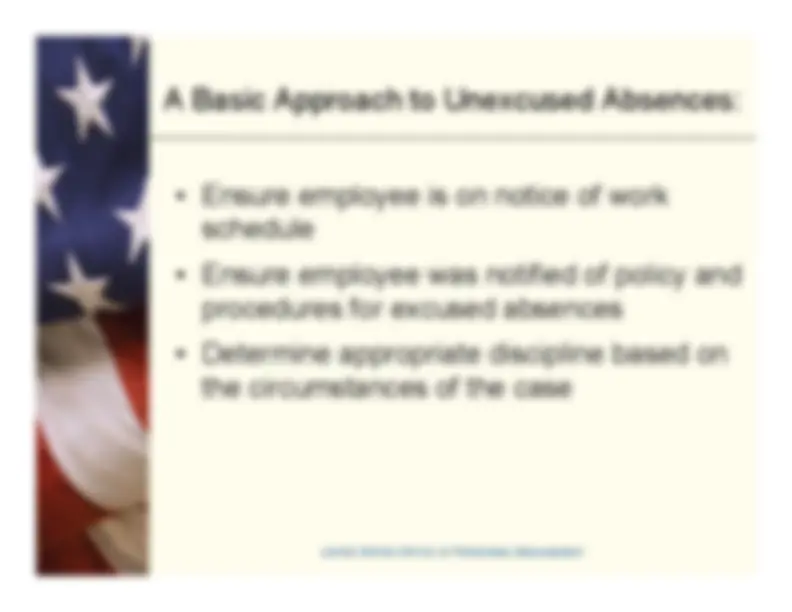
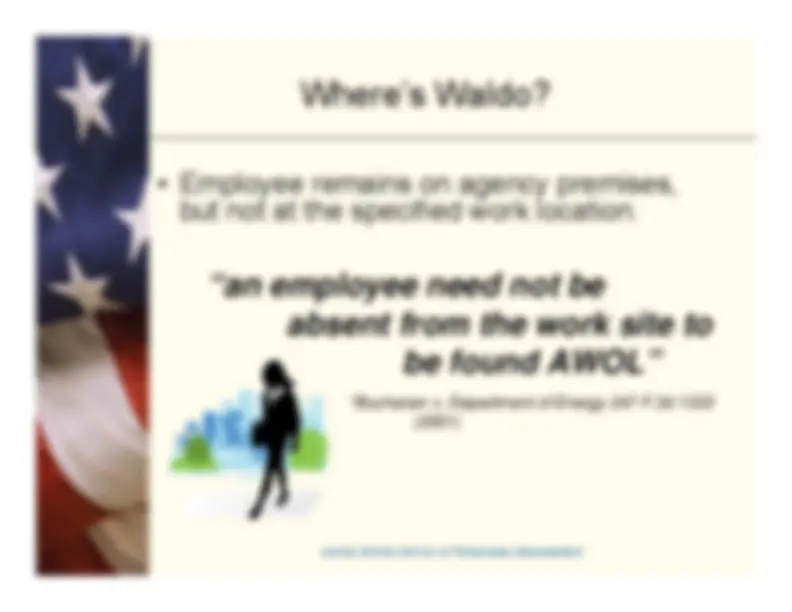
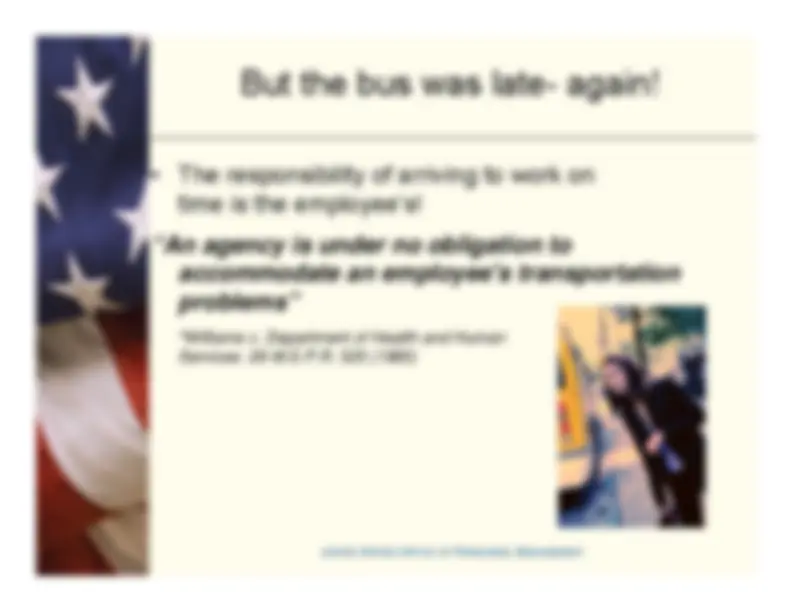
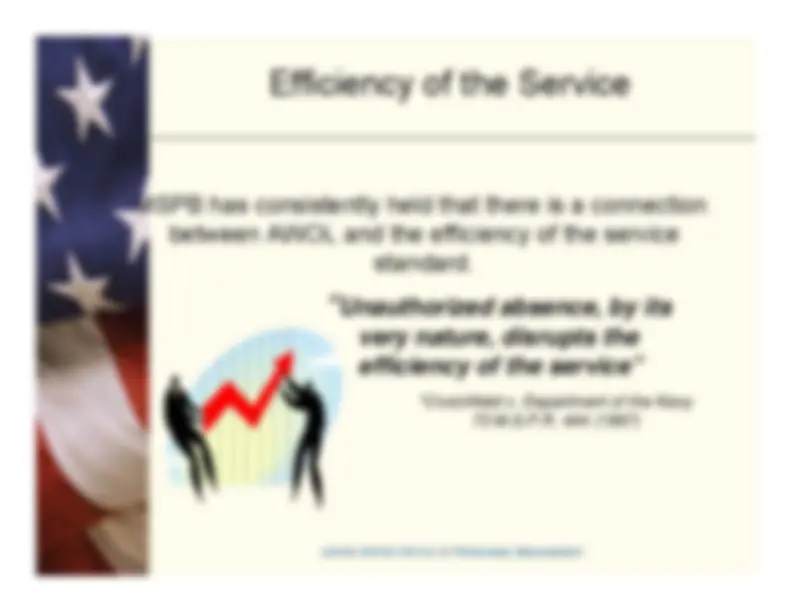
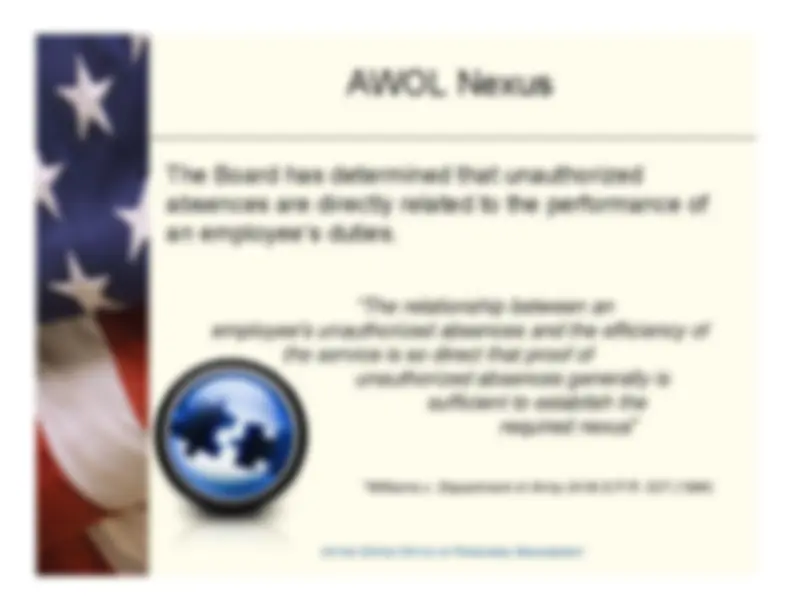
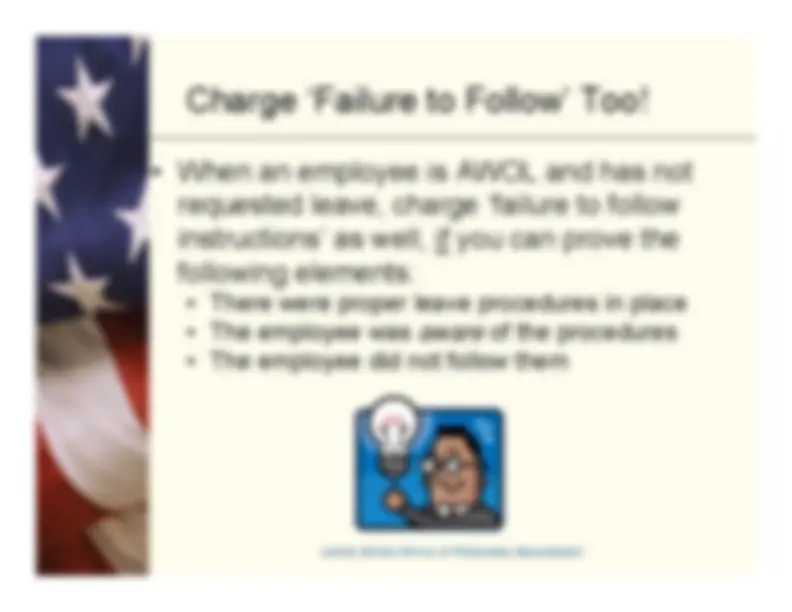


Study with the several resources on Docsity

Earn points by helping other students or get them with a premium plan


Prepare for your exams
Study with the several resources on Docsity

Earn points to download
Earn points by helping other students or get them with a premium plan
Community
Ask the community for help and clear up your study doubts
Discover the best universities in your country according to Docsity users
Free resources
Download our free guides on studying techniques, anxiety management strategies, and thesis advice from Docsity tutors
An overview of Absence Without Leave (AWOL), its implications for federal organizations, and best practices for addressing attendance issues. AWOL is a non-pay status for unauthorized absences and can negatively impact an organization's ability to complete its mission. Supervisors should establish clear leave procedures, document all instances of AWOL, and take appropriate disciplinary action when necessary.
Typology: Lecture notes
1 / 16

This page cannot be seen from the preview
Don't miss anything!










AWOL is an employee attendance issue.
An agency may discipline an employee who is AWOL. •
Remember, an employee is AWOL when:
-^
An employee is absent from their assigned place of duty;
-^
The absence was not authorized; and/or
-^
The leave requested by the employee has been properlydenied
AWOL and Administrative Case Law
AWOL can be recorded in fractions of anhour – in accordance with the agencies’payroll system.
Notating AWOL in and of itself is not adisciplinary action, however it could be the basis
for taking disciplinary action.
A Basic Approach to Unexcused Absences:
The responsibility of arriving to work ontime is the employee’s!
“An agency is under no obligation to
*accommodate an employee's transportation problems” ** Williams v. Department of Health and HumanServices 29 M.S.P.R. 525 (1985)
The supervisor’s expectations regarding leaveusage
Specific information about leave balancesand/or specific dates when employee has notfollowed proper procedure or the pattern ofleave abuse
The leave procedures that they are required tofollow
The period of restriction
Consequences of not following the proceduresin the future
MSPB has consistently held that there is a connection
between AWOL and the efficiency of the service
standard.
Unauthorized absence, by its
very nature, disrupts the efficiency of the service”
*Crutchfield v. Department of the Navy
73 M.S.P.R. 444 (1997)
The Board has determined that unauthorizedabsences are directly related to the performance ofan employee’s duties.
“The relationship between an
employee's unauthorized absences and the efficiency of
the service is so direct that proof of
unauthorized absences generally is
sufficient to establish the
required nexus
”
*Williams v. Department of Army 24 M.S.P.R. 537 (1984)
Leave without pay (LWOP) is an
approved
temporary
nonpay
status and absence from duty.
In most instances, granting LWOP is a matter of supervisory discretion
and may be limited by
agency internal policy.
In general, management should not retroactivelycharge AWOL if the employee was granted theleave in the first place!
However, an employee who fails to providerequested medical documentation may havepreviously approved LWOP changed to AWOL.